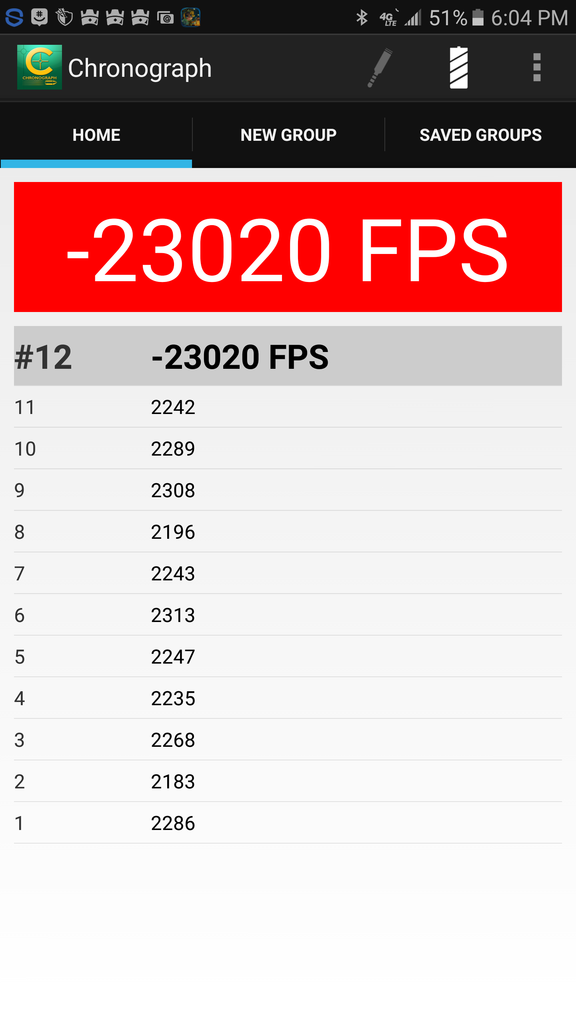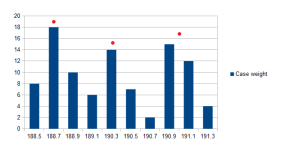Ub3rn00ber
New member
Hello all! I finally got a Crono and was very disappointed in the results with my 30-06 reloads.
I had 113 fps variation with 12 shots.
Every shell is a fire formed winchester, trimmed to specs. I am using 53.5gr of 4831, and 180gr hornady sst .308. This is the second load on the brass, every charge was thrown with a lyman auto, +.1/-.0 so I have very little variation. Every bullet was seated the same to +/- .001, OAL 3.233 +/- .001. Outside tempature about 100F. Crono set about 17-20 feet away, with IR shades.
I don't know if it matters but data started recording after 5 shots, it was not allowed to cool approximately 45-60 seconds between shots.
Below is a screenshot of the data.

Any advice, thoughts? Holding 1.25 5 shot group.
Edit: loaded on rock chucker single stage.
I had 113 fps variation with 12 shots.
Every shell is a fire formed winchester, trimmed to specs. I am using 53.5gr of 4831, and 180gr hornady sst .308. This is the second load on the brass, every charge was thrown with a lyman auto, +.1/-.0 so I have very little variation. Every bullet was seated the same to +/- .001, OAL 3.233 +/- .001. Outside tempature about 100F. Crono set about 17-20 feet away, with IR shades.
I don't know if it matters but data started recording after 5 shots, it was not allowed to cool approximately 45-60 seconds between shots.
Below is a screenshot of the data.

Any advice, thoughts? Holding 1.25 5 shot group.
Edit: loaded on rock chucker single stage.
Last edited:

